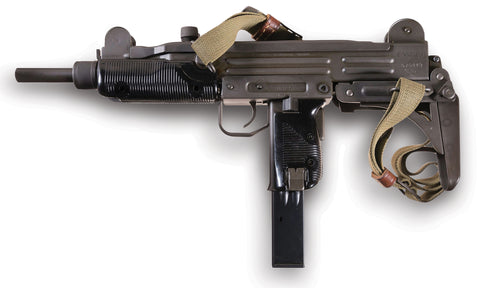
Why is the Uzi Submachine Gun So Beloved By Special Forces?
The Uzi submachine gun (SMG)/machine pistol is an iconic firearms design, with a silhouette possibly as recognizable as that of the AK-47. It emerged in a unique time and space in post-World War II history.
In 1948, the newborn State of Israel, surrounded on all borders by active enemies, recognized the need to rationalize and update its chaotic weapons inventory. Israel Military Industries (IMI), the official state arms manufacturer, commissioned two engineer officers to design a new SMG for the Israel Defense Forces (IDF). One of them, Capt. Uziel Gal, lent his name to the winning weapon, which went into service as the 9mm Uzi SMG in 1954 alongside the 7.62mm FN FAL as the standard infantry battle rifle.
Gal’s overall design was inspired by the Czech CZ 25, but he perfected it in a weapon cheap to produce, easy to fire, simple to service, and ruggedly dependable. As with the CZ 25, the Uzi incorporated the magazine housing into the pistol grip and used a telescoping bolt with a blowback action. It could race through a magazine at a cyclical rate of 600rpm and was accurate up to 200 yards (fired in the semi-automatic mode; automatic fire accuracy is much less, about 50 yards).
The Uzi cut its teeth in the IDF’s wars of the 1950s and 60s, where it proved ideal for urban and close-quarters combat. It also achieved major export success, particularly to foreign special forces. The Uzi evolved over time, replacing its original wooden stock with folding metal varieties, developing even smaller Mini and Micro variants, and adopting various rails and accessories. Yet in regular Israeli military service, the rise of the assault rifle in the 1970s led to the IDF’s replacement of both the FN FAL and the Uzi by the 5.56mm Galil assault rifle.
Uzis continued in special forces, armored crews, and auxiliary service until the 2000s, and endures to this day on international markets.
Pistol grip
The combined pistol grip and magazine housing gives the weapon an excellent center of balance in the grip hand and fast reloading through an intuitive “hand-finds-hand” principle. As an additional safety feature, the button on the back of the grip had to be fully depressed by the grip hand before the weapon would fire.
Magazine
The standard Uzi magazine holds 32 rounds, although shorter and extended magazines are available.
Telescoping bolt
The front part of the bolt wrapped around and past the breech end of the barrel, to keep the bolt mass high but the weapon length short.
Receiver
The main body of the Uzi was simple pressed steel with the cocking lever running along the top of the weapon.
